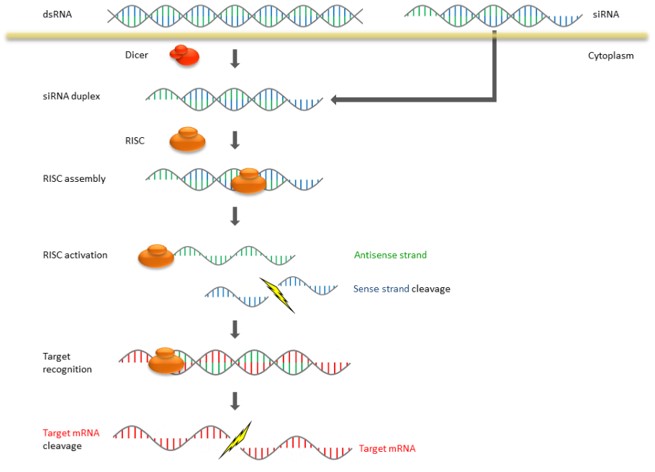Hypertension, a pervasive cardiovascular syndrome, is the primary driver of cardiovascular diseases and premature mortality. Creative Biolabs is at the forefront of revolutionizing hypertension treatment through the integration of gene therapy and cutting-edge lipid-based delivery systems, providing an innovative, accurate, and durable solution to this global health issue.
Hypertension, often called high blood pressure, is a medical condition marked by consistently high pressure of circulating blood against the walls of blood vessels. Blood pressure is generally represented as the ratio between systolic pressure (the force exerted on arterial walls during heart contraction) and diastolic pressure (the force exerted during heart relaxation). When blood pressure remains abnormally high, the heart is forced to work harder to pump sufficient blood to meet the body's normal physiological demands, thus exerting excessive pressure on the cardiovascular system. When unmanaged, hypertension may result in significant health issues, potentially harming critical organs like the eyes, brain, heart, and kidneys.
In recent years, gene silencing therapy has emerged as a revolutionary approach to treating hypertension. Unlike traditional medications that temporarily manage symptoms, gene silencing targets the underlying molecular mechanisms of the disease, offering the potential for sustained blood pressure control.
In mammalian cells, protein-coding genes are transcribed into precursor messenger RNA (pre-mRNA) within the nucleus. These pre-mRNAs undergo splicing, nucleotide modification, and 5' and 3' end processing to mature into messenger RNA (mRNA), which is then transported to the cytoplasm for translation. Gene silencing techniques such as small interfering RNA (siRNA), microRNA (miRNA), and antisense oligonucleotides (ASO) can precisely target genes linked to elevated blood pressure, effectively silencing them. Despite differing mechanisms, these techniques suppress gene expression by attaching to complementary sequences of target mRNA, thus blocking its translation. This approach effectively reduces the expression of proteins that contribute to elevated blood pressure, offering a potential therapeutic strategy rather than merely addressing symptoms.
 Fig.1 Mechanism of RNA interference (RNAi).1
Fig.1 Mechanism of RNA interference (RNAi).1
siRNA is a double-stranded regulatory molecule approximately 21-23 nucleotides in length. During the initial processing step, long double-stranded RNA (dsRNA) is cleaved by the RNase III enzyme known as Dicer, resulting in siRNA molecules with a 5'-phosphate group, a 3'-hydroxyl group, and 2 nt 3'-overhangs. Once inside the cell via endocytosis, siRNA associates with the RNA-induced silencing complex (RISC) and is unwound by an RNA helicase within the complex. The antisense strand with a more stable 5' end is typically incorporated into the active RISC complex, guiding it to align with the complementary target mRNA sequence. This alignment induces the cleavage of the target mRNA, thereby causing gene silencing and blocking protein translation.
miRNA are endogenous non-coding RNAs, approximately 19-30 nucleotides in length, that are derived from hairpin precursors of 70-90 nucleotides via processing by the Dicer enzyme. miRNAs achieve this by targeting the 3'-untranslated region (3'-UTR) of mRNAs, leading to mRNA degradation or translation inhibition, thereby exerting their regulatory effects at the protein level.
Unlike siRNA, ASO are single-stranded nucleic acids ranging from 13 to 25 nucleotides in length. It inhibits mRNA translation through three mechanisms: destabilizing pre-mRNA, blocking ribosome binding, and activating RNase H1, which degrades the RNA strand in RNA/DNA hybrids.
In hypertension treatment, siRNA is commonly delivered via intravenous routes. However, nucleases present in blood, serum, and living cells can rapidly degrade siRNA, significantly reducing its half-life. To address this challenge, Creative Biolabs has developed a lipid-based delivery system that encapsulates negatively charged siRNA within a protective lipid bilayer, enhancing its stability and protecting it from enzymatic degradation. This system offers several key advantages:
To enhance gene silencing efficacy, our lipid-based delivery system can be customized for targeted delivery and responsive release triggered by factors like temperature, pH, or light, ensuring more precise therapeutic impacts.
Creative Biolabs' lipid-based delivery system marks a major breakthrough in hypertension therapy. By leveraging the power of gene silencing through siRNA, we offer a targeted, effective, and innovative solution. If you are interested in learning more about how our gene therapy-based lipid delivery systems can revolutionize hypertension treatment, we invite you to contact us.
Reference
 For Research Use Only. Not For Clinical Use
For Research Use Only. Not For Clinical UseApplications
Online Inquiry

